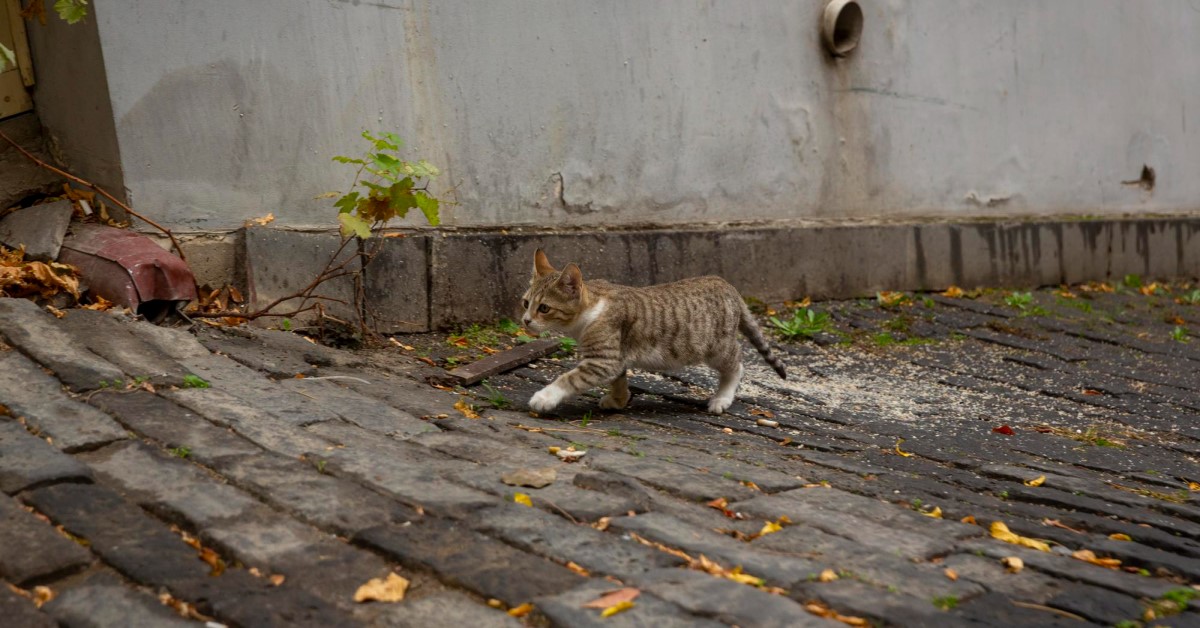Frostbite Dangers in Animals
Even a quick trip outside to relieve itself is all it takes for a Dachsund's paws to freeze

It is a misconception to believe that cats and dogs can withstand cold temperatures because they have fur. Some large dog breeds are well equipped for the winter months and love to be outdoors while others like small breed dogs are more sensitive and have no tolerance for the colder temperature. Even a quick moment outside to do its business is all it takes for a little Dachshund's paws to freeze up and have him shivering.
Cats usually don't stay out doors for long when it's very cold. They might make a quick pounce and come right back into the house. Always make a note of the upcoming forecast before letting your cat out. It might be colder the next day and if kitty hasn't come home he or she will be more at risk to developing frostbite and hypothermia especially if no one is around to let them back in the next morning.
What is Frostbite?
Animals have ways of dealing with cold temperatures but when
exposed to extreme freezing temperatures for an extended period
of time, these same mechanisms that work to keep them warm and
alive can actually cause damage and death to the tissues of their
extremities such as the tips of
ears, tail, and foot pads.
How does a cat or dog's body react when exposed to cold temperatures?
When a dog or cat is exposed to cold temperatures its body reacts in stages:
- Your pet's fur provides insulation just like us wearing a
coat. Its hairs, when exposed to cold air undergo
pilo-erection. This is similar to when you and I get
goose bumps. The hairs "stand up erect" trapping the air in that
layer. This air is then warmed by the body which provides
additional insulation.
- When the body's core temperature decreases, an involuntary
reflex by the skeletal muscles known as "shivering" is triggered
to generate heat and warm you up. Animals like humans experience
this same
reaction.
- When the body is really getting cold and the animal’s life
may be at risk, the body responds by vasoconstricting
the peripheral tissues. This means the body is being selective in
where it is sending warm blood. This is dangerous to pets, as
blood flow to the extremities may be reduced causing the tissue
in those areas to die.
- The organs are the most important to keep an animal and human
alive so blood is circulating in the core of the body (heart,
liver, kidney lungs,) and shuts down temporally by constricting
blood vessels to the extremities until the body's normal
temperature is attained.
- By this stage if a cat or dog has not received First Aid or
warmth on it's own, frostbite will develop. Tissues that have
frozen due to this response, die. Cats and dogs often experience
frostbite on the tips of their ears, tails, face, footpads, legs
and the genitalia in male dogs.
Signs
Symptoms to look for if your pet has been outdoors and you suspect it may be suffering from frostbite.
- Ice on body and limbs
- Shivering
- Tissues are bright red followed by pale color( vasoconstriction) to black color (death of tissue)
First Aid
- Warm the affected area rapidly with warm water using towels
or warmed ice packs.
- If it is a limb or paw that is frozen, soak it only in a bath
or bowl of warm water.
- Dry gently after you have the warmed the area.
- Do not rub or massage the frozen tissue
- Do not apply snow or ice
- Do not immerse your pet completely in a bath this will cause the body temperature to decrease and cause hypothermia.
Prevent Self-Trauma
When the tissues are warmed it may cause some discomfort to your pet. The same also occurs when tissues are dead:
- Wrap your pet in a blanket to prevent self-trauma such as
chewing or gnawing at the affected limb, and to help keep him or
her warm and calm.
- Seek Veterinary care immediately. Secondary infections can sometimes result from gangrene tissues.
What is Hypothermia?
Hypothermia is an abnormal lowering of the body's temperature. This dangerous condition can occur faster than you think. This is a serious condition that can cause unconsciousness, shock and even the death of a pet. Pets that are outdoors in cold or subzero temperatures for too long can become hypothermic. To be safe, never let your cat or dog out and walk away. Stand and watch as they do their business, so that you don't get busy or distracted and forget they are outdoors. If you are standing in the cold doorway, you will usher them back in as soon as they are finished, simply because you will be cold yourself!
If your pet shows signs of frostbite he or she may also be experiencing hypothermia. However do not rely on frostbite alone as an indication of hypothermia, as it can occur without the presence of frostbite.
Signs
- Low body temperature (below 37.5) Take your pet's
temperature rectally. A lubricated electronic thermometer is easy
to use.
- Excessive, uncontrolled shivering
- Weakness, unwillingness to move or restricted movement.
First Aid
- Warm your pet.
- Use blankets
- Put warm water in plastic bottles then rap in towels to
prevent burns.
Use plastic zip lock bags filled with uncooked rice that you warm in the microwave for 1-2 minutes then rap in a towel.
- Micro wave ice packs that have not been frozen and rap in a
towel.
If you use a heating pad never put the animal directly on the pad. Always use several towels. A weak animal will not be able to move and will suffer burns.
- A hair dryer on medium warm is a quick start to warm up your
pet while someone else is preparing blankets and water
bottles.
- Monitor your pet’s rectal temperature every 10-15
minutes.
- When his or her body temperature is back to normal (38.5 C)
stop warming. An over heated animal is just as dangerous.
- Seek Veterinary care even if it looks like your pet is fine after you have warmed him or her. Kidney and bladder problems (infections) are common in pets that have been exposed to cold temperatures.
An animal that has been hypothermic and or has frostbite is in danger for his or her life. Veterinary care is a must.
Ready to start saving money on pet wellness care?
Then take a look at Mint Wellness, the pet wellness plan that provides fast reimbursement on routine pet care. Save on vaccinations, wellness exams, preventatives, dental, and more!
Learn More


